The table below provides basic information about the float, including primary sensors, mission parameters and current status of profiles.
| Institute | CSIRO |
| Principal Investigator | Susan Wijffels |
| Pressure Sensor | Druck (serial number=2458984) |
| CTD Sensor | APEX-SBE-41 (serial number=3603) |
| CTD Sampling Mode | Burst Sampler |
| Controller Board | APF 9 |
| Additional Sensors/Software | Aanderaa Oxygen Optode 3830 (serial number=876) |
| Park Depth | 1000 m |
| Profile Depth | 2000 m |
| Launch Date | 08-01-2008 |
| Number of D-moded Profiles | 75 |
| Calibration Date | 28-07-2010 |
| Pressure Drift | Surface Pressure Offset corrected |
| Salinity Drift | No salinity drift detected |

This float was deployed to the north of the Kerguelen Plateau in the Southern Indian Ocean and has drifted in a region bounded by 62 to 78 ºE and 37 to 43 º S.
The surface pressure for this float is shown in the plot below. There is possible a slight drift which has been corrected.
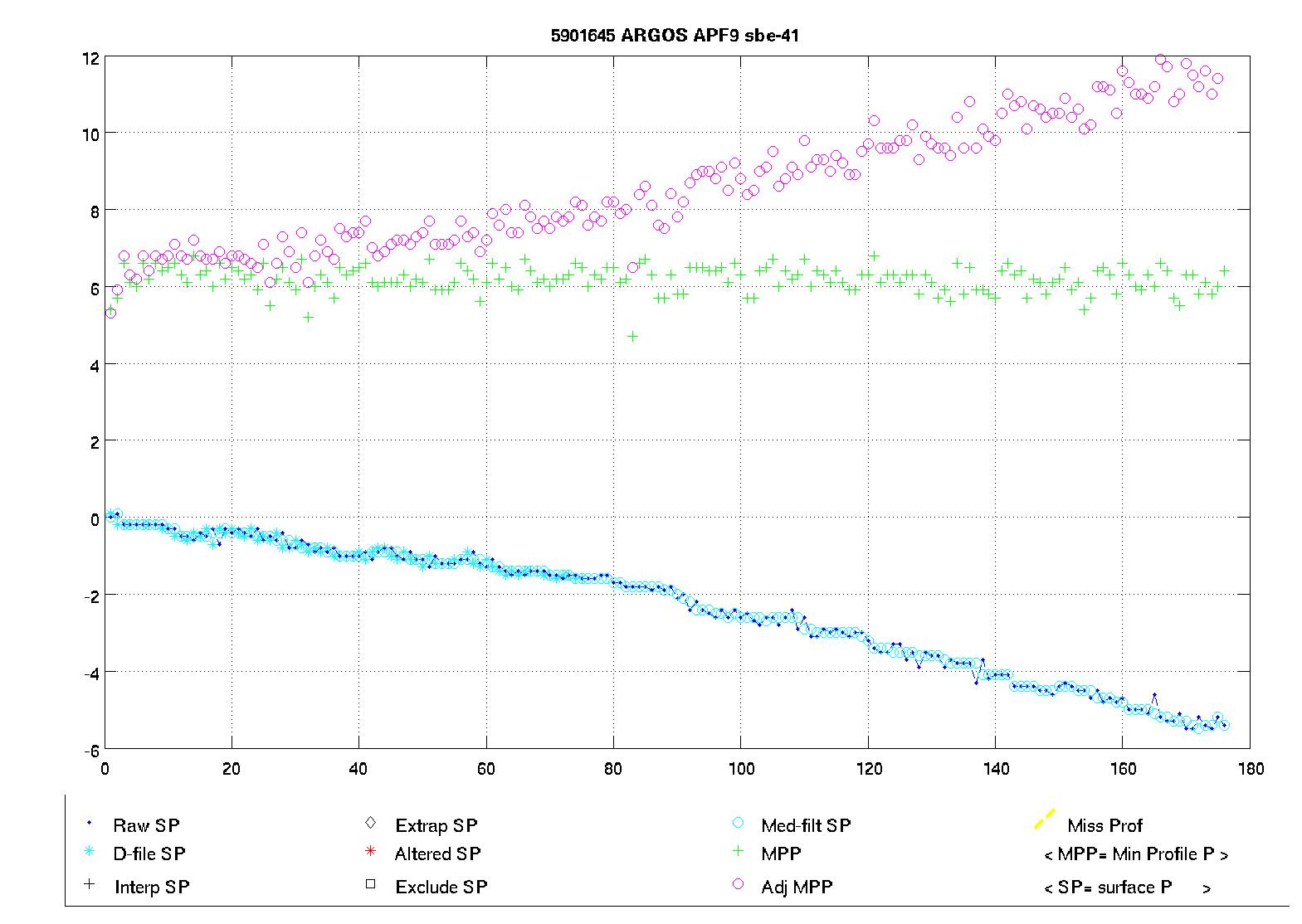
Potential Temperature-Salinity (a), Location (b, Max Temperature (c) and Sea Surface Salinity (d) plots located below.

Surface temperatures generally varied between 12 and 17 ºC and surface salinities from 34.6 to 35.5.
The plot below shows the potential-temperature/salinity curve for the deepest theta levels where the relationship between the two parameters should show the least variation.

The deep profiles look fine.
The two plots below show a). the location of this float (black circles) in relation to the position of other nearby argo floats (coloured circles) and b). The potential-temperature/salinity curve for this float (in black) compared to nearby argo floats (coloured).

The potential-temperature/salinity curve for the deepest theta levels for this float (in black) and nearby argo floats (coloured) is displayed below.

The TS plot and deep TS looks fine compared to neighbouring floats - this flaot is well within the envelope.
There were inversions in profiles; 28. These were not significant and were not flagged.
Salt hooks were located in profiles; 2,4,14,15,19,28,30,33,38,40,42,45,48,50,52,54,55,60,61,64. These were flagged as QC 4 for both T & S.
The float did not ground but there were a few shortened profiles; 1, 2, 8, 10, 34 and 35. A deep low salinity spike in profile 15 at 1450m was QC=4 for both T & S. Profile 17 had a deep spike in the salinity minimum at 1100 m, this was QC'd as 4 for both T & S.








The plot below shows the analysis of salinity drift using the WJO/OW software.

The four plots below show the salinity anomalies on theta surfaces compared to (a) the Gouretski and Kolterman climatology, (b) the CARS (CSIRO Atlas of Regional Seas)/WOA (World Ocean Atlas) climatology, (c) the anomalies within the float series itself, (i.e. the salinity anomaly of each profile from the mean profile average for the float and (d) the raw float salinity compared to the CARS and G&K climatological salinity on a theta surface of 0.xx degrees C.
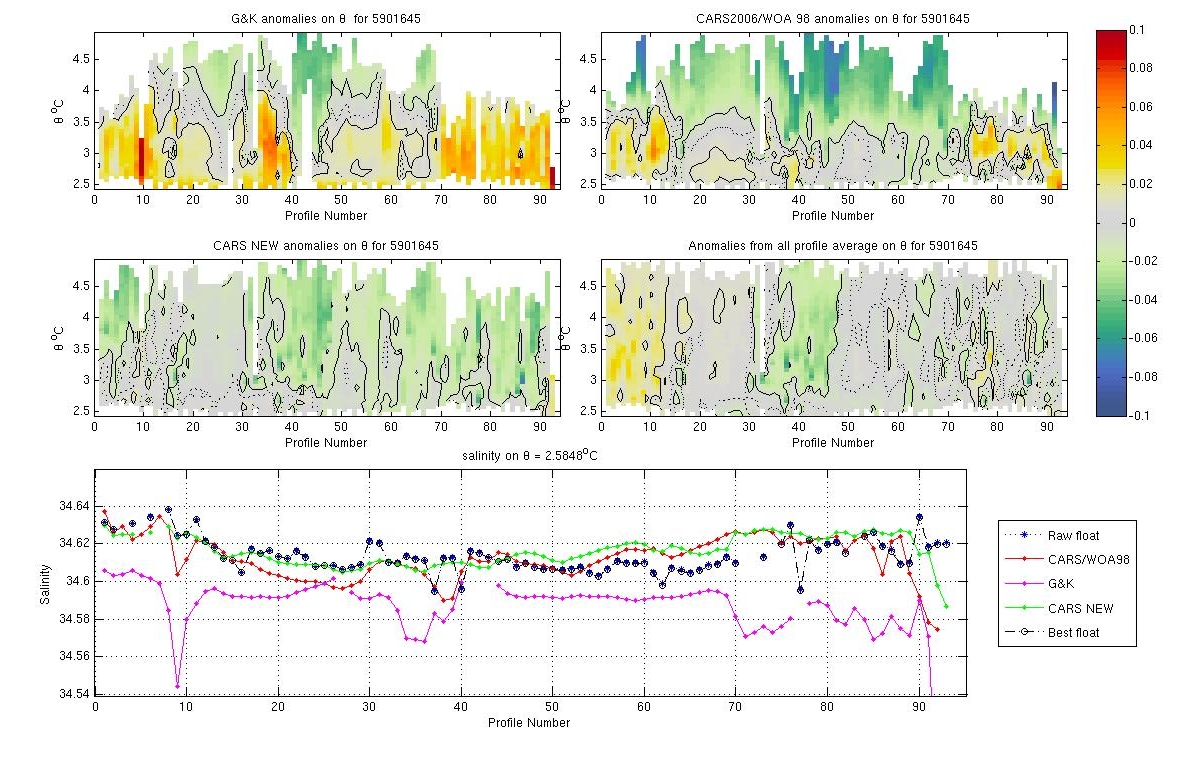
This float was close to CARS and salt offset from G & K by 0.02. Float looks okay.
The plots below show the raw float salinity data (solid blue line) compared to neighbouring argo floats (coloured symbols) on a potential temperature surface of xx degrees C. The locality map shows the location of the profiles for this float and for neighbouring floats.
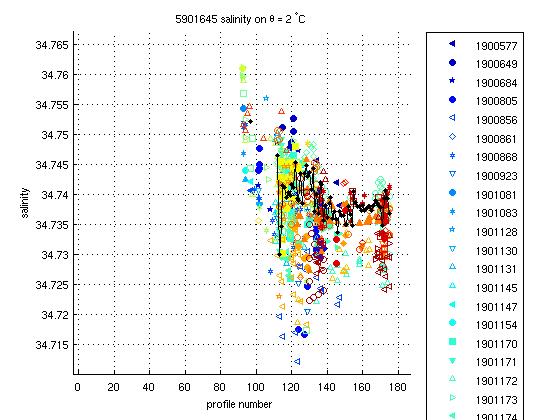
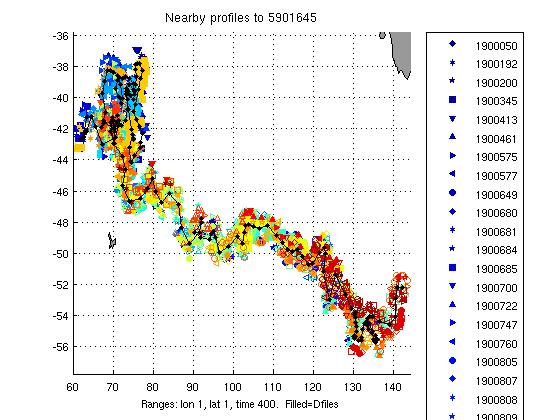
This float is in the middle of the nearby argo envelope.
This float required no salinity drift correction.
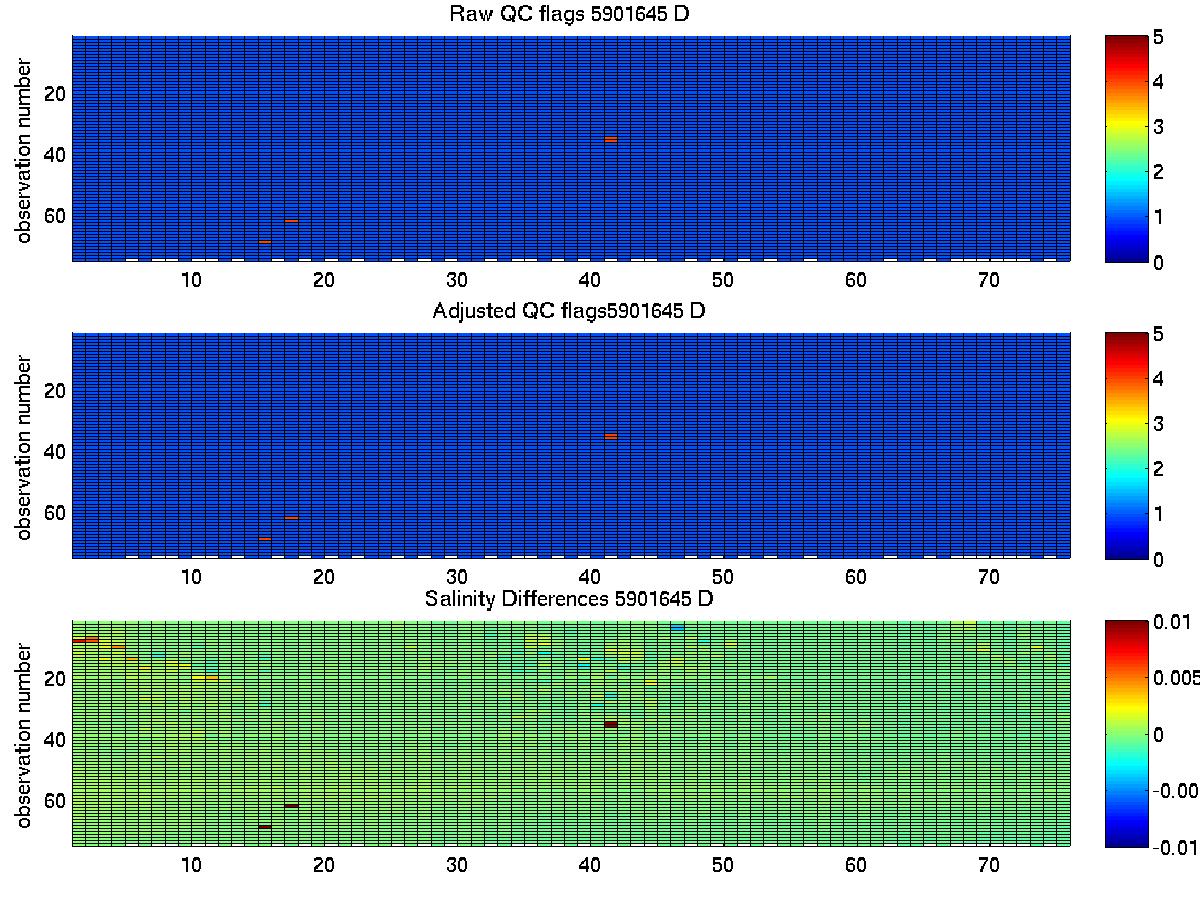
The plot below summarises the QC flags and salinity differences for the raw and adjusted salinity fields in the final delayed mode files submitted to the GDAC.
Created 28-07-2010